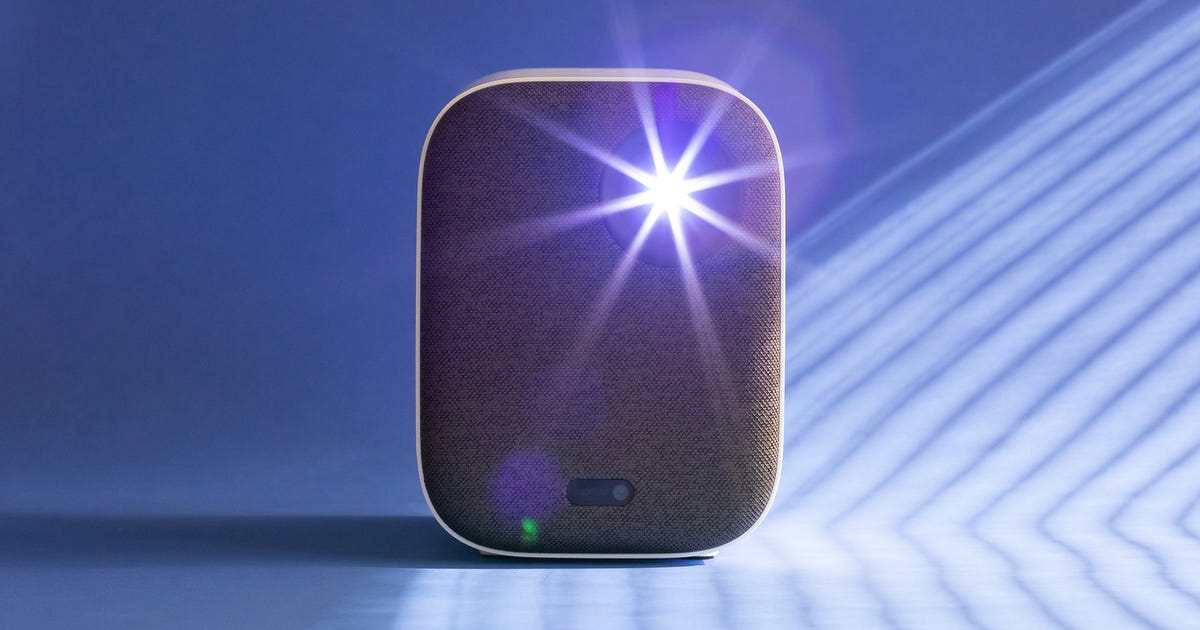In the event you’ve ever attempted to arrange a projector you can be conversant in the fight of having a superbly oblong picture at the wall. It’s because the lens of projector must be perpendicular to the display. If any nook of the projector is nearer to the display than its reverse, you can get some more or less trapezoid as a substitute of a pleasant rectangle.
This is not a brand new downside, and for many years projectors have had a “function” to counter this factor. Known as keystone correction, or keystone adjustment, it’ll technically make a rectangle from your trapezoid… in an effort to talk. In the event you care in any respect about image high quality, do not use it. Here is why.
The issue with now not being perpendicular
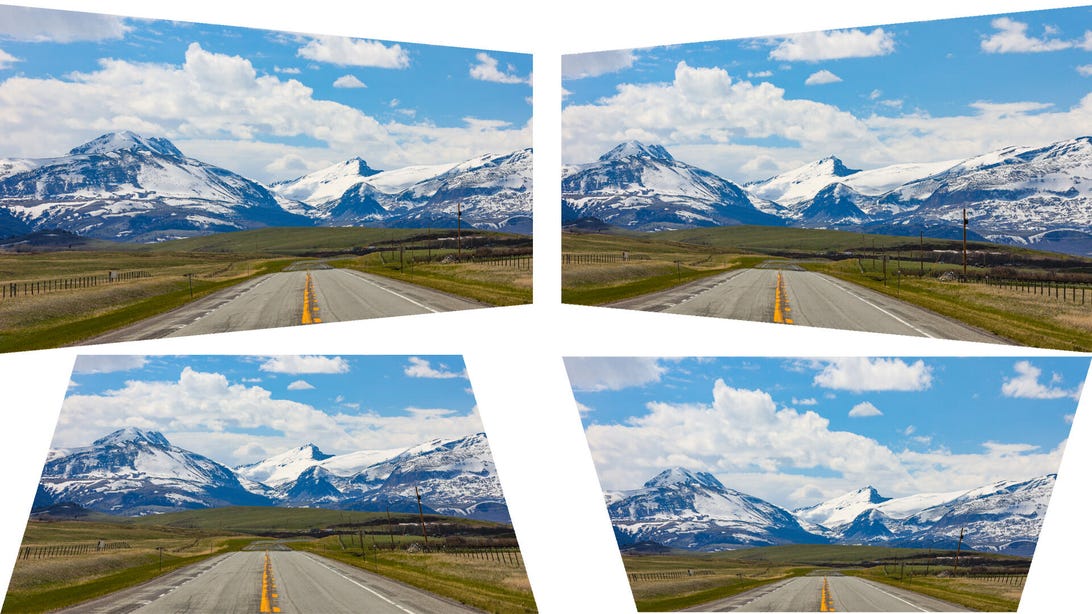
Examples of what your picture would possibly appear to be in case your projector is not precisely heart. You would need to flip or tilt the projector to get it to line up, leading to a trapezoid. Clockwise from best left: PJ too some distance proper, too some distance left, too top, too low.
Geoff Morrison/CNET
Projectors are a two-piece device: the projector and the display. Despite the fact that you might be the use of a wall or the facet of your own home as a substitute of a display, that also counts. All projectors use oblong imaging chips to create a picture, and it is a very powerful that the picture despatched by way of the chip is strictly perpendicular to the display. Each nook must be the similar distance to the display as its reverse nook and if that does not occur, the form will get distorted.
Despite the fact that you might have by no means used a projector, you might have most certainly noticed this impact in motion. Ever used a flashlight? Level it immediately on the wall and you have a circle. Level it at the flooring forward of you, and it is an oval. Identical thought.

Some projectors have a function referred to as lens shift, which routinely adjusts how the imaging chips, lens and display line up. Lens shift allows you to transfer the picture somewhat at the wall with out hurting picture high quality, however its adjustment vary is restricted. If you are past how some distance the lens shift can alter, or the projector should not have lens shift in any respect, misplacement will purpose the picture to head askew.
Maximum monitors have black borders so that you don’t want precise placement to the picometer, nevertheless it’d be a disgrace to put money into a projector, and time on putting in it, simplest to be frustrated on the visual edges when you find yourself the use of it.
Which is why each and every projector has keystone correction. That does not imply it is excellent.
Keystone: Now not even as soon as
Keystone correction targets to unravel electronically what’s inherently an optical downside. The projector will digitally alter the picture in the wrong way to offset the trapezoid. So if the picture is, say, smaller at the left than the precise, the projector can scale back the scale of the precise facet so apparently oblong once more. Artful, proper? Form of. Sadly there ain’t no such factor as a unfastened lunch.
All trendy projectors use one among 3 applied sciences, DLP, LCD, or LCOS. They all have a hard and fast choice of pixels, or image components, used to create a picture. There is not any strategy to trade the choice of pixels on any such chips. Those imaging chips are usually fastened in position as smartly.
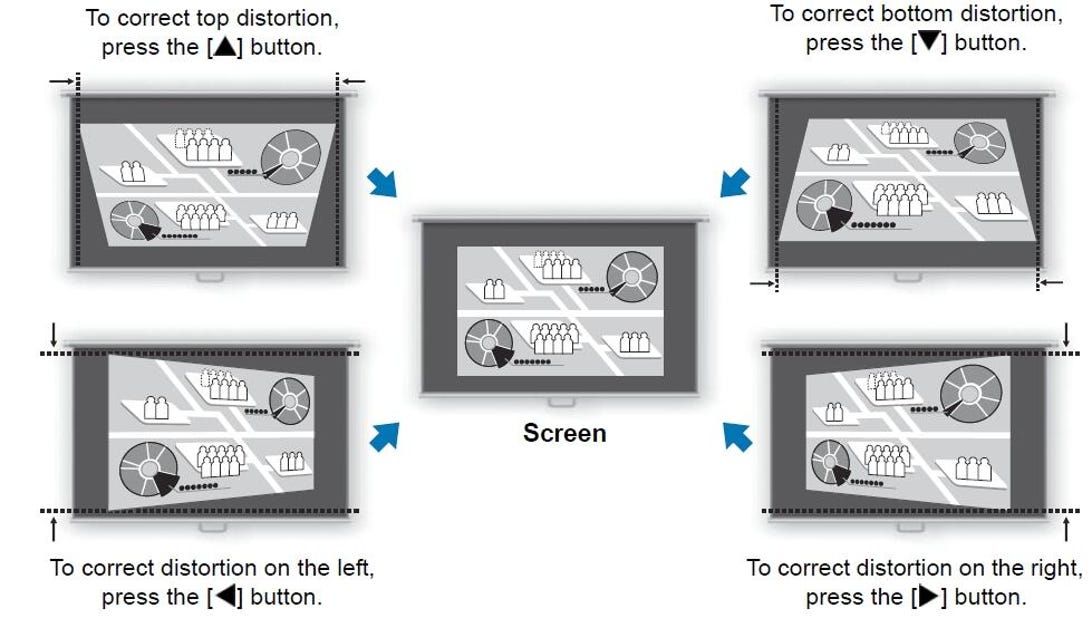
How a projector now not covered up as it should be would possibly glance on display, and the buttons to press to “repair” the problem, by way of a trade projector’s proprietor’s handbook.
Canon
What keystone correction does is scale the picture smaller, after which additional procedure it to shape the form required to “glance” oblong. Or to place it in a different way, it is drawing a trapezoid inside of a rectangle, however since the projector and picture itself is skewed, that trapezoid now seems to be oblong.
Each of these items scale back picture high quality. Scaling, on this case, reduces the choice of pixels used to create the picture. You are simplest the use of a portion of the imaging chip to create the brand new picture form. The extra you alter the keystone, the less pixels are used, additional softening the picture.
Maximum projectors should not have a lot processing energy, so this scaling would possibly additional melt the picture, or it will introduce different noticeable artifacts. Converting the form of the picture is an extra processing problem and will upload further artifacts.
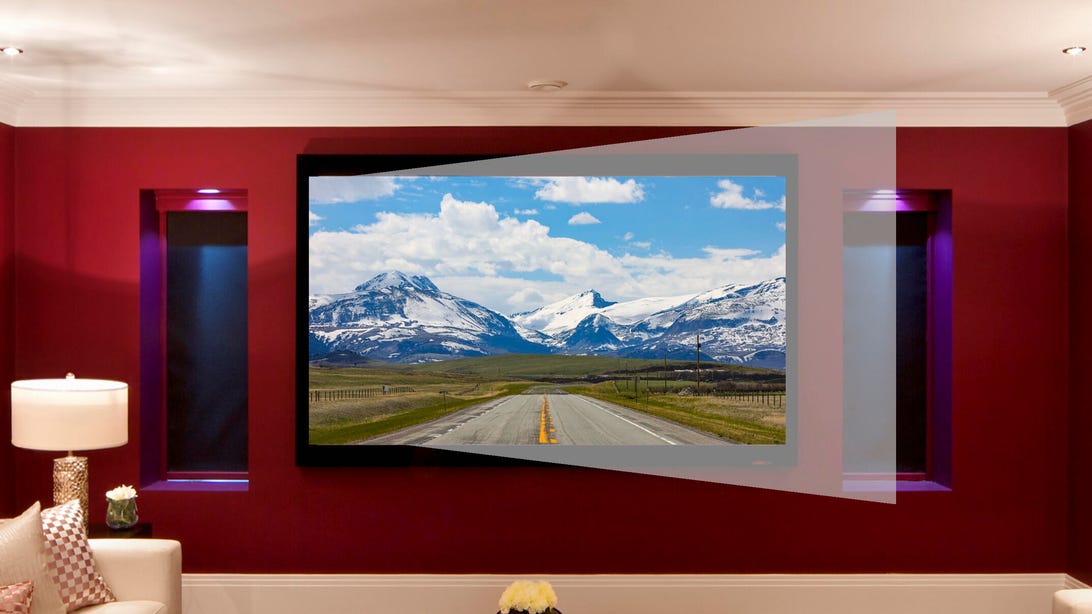
Virtual keystone adjustment would possibly get you an oblong picture, however the projector’s imaging chips are all nonetheless lively, so you can get a dismal grey “picture” projected the place the picture is not. On this representation, the picture on the best of the object has been “adjusted” however the projector hasn’t moved. So that you get an oblong picture but in addition the unique trapezoid of the angled imaging chips.
Geoff Morrison/CNET and phototropic/Getty Photographs
And if that were not sufficient, it is not possible to show “off” the pixels you might be now not the use of. So there may be nonetheless going to be mild projected at the display from those unused pixels, which seems within the trapezoid form you might have been seeking to keep away from. In an excessive state of affairs, it’s essential to have a noticeable grey picture past the display space. Inelegant at absolute best, distracting at worst.
The answer? Position the projector correctly
There is not any higher answer than now not having the issue initially. Right kind projector placement placates attainable image perils. Or to cite the traditional adage from prehistory: measure two times, reduce as soon as.
If you are mounting your projector completely, double- and triple-check the mount is in the proper position on your projector. That is a very powerful. Maximum projectors, particularly the ones in response to DLP, have their lenses offset from the middle of the projector. Preferably, your mount can have some adjustment “wiggle room,” however it will now not.
Generally you’ll be able to obtain a mounting template and different information from the producer’s web page.
Additionally imagine that almost all projectors, once more particularly the ones in response to DLP, have an “upward throw.” Which is to mention, they invent a picture a number of inches above the highest of the projector (or under, if it is fastened at the ceiling). You’ll’t tilt the projector down since that, too, creates a trapezoid. Once more, this information is at the corporate’s web page.
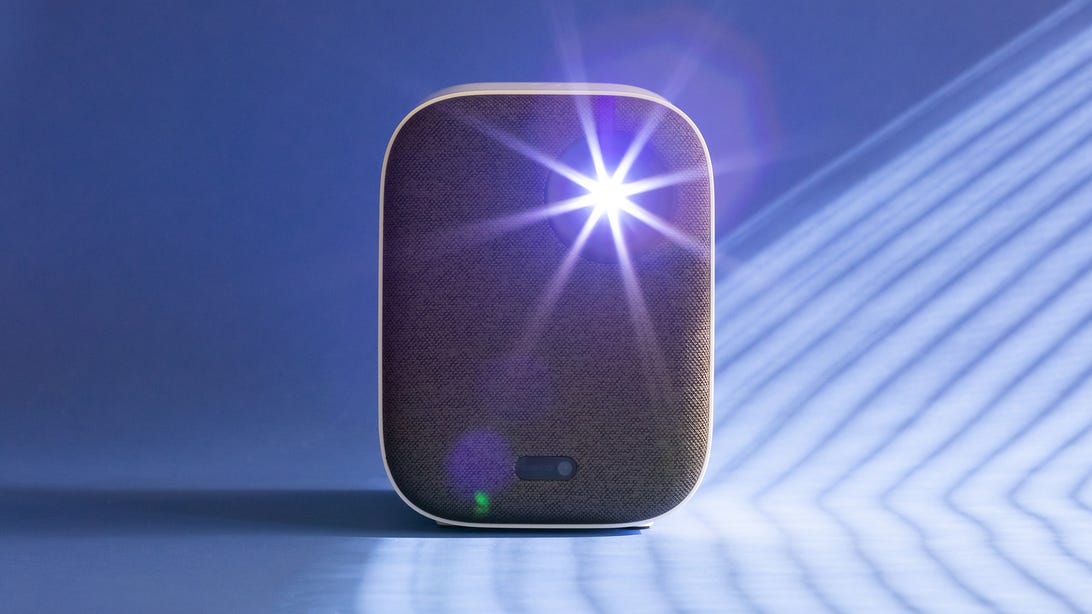
Many moveable projectors have automated keystone correction. It is value turning off in case you are in a position to get the projector correctly located.
Geoff Morrison/CNET
So yeah, for those who completely have to make use of keystone correction, opt for it. But it surely must simplest be used as a final lodge in eventualities the place you bodily cannot position the projector in its correct place. If you are mounting it, it is best to spend the time and get it proper the primary time and now not depend on image-reducing digital trickery to mend a nasty set up.
In addition to overlaying TV and different show tech, Geoff does picture excursions of cool museums and places all over the world, together with nuclear submarines, large airplane carriers, medieval castles, epic 10,000-mile highway journeys and extra. Take a look at Tech Treks for all his excursions and adventures.
He wrote a bestselling sci-fi novel about city-size submarines, together with a sequel. You’ll apply his adventures on Instagram and on his YouTube channel.

